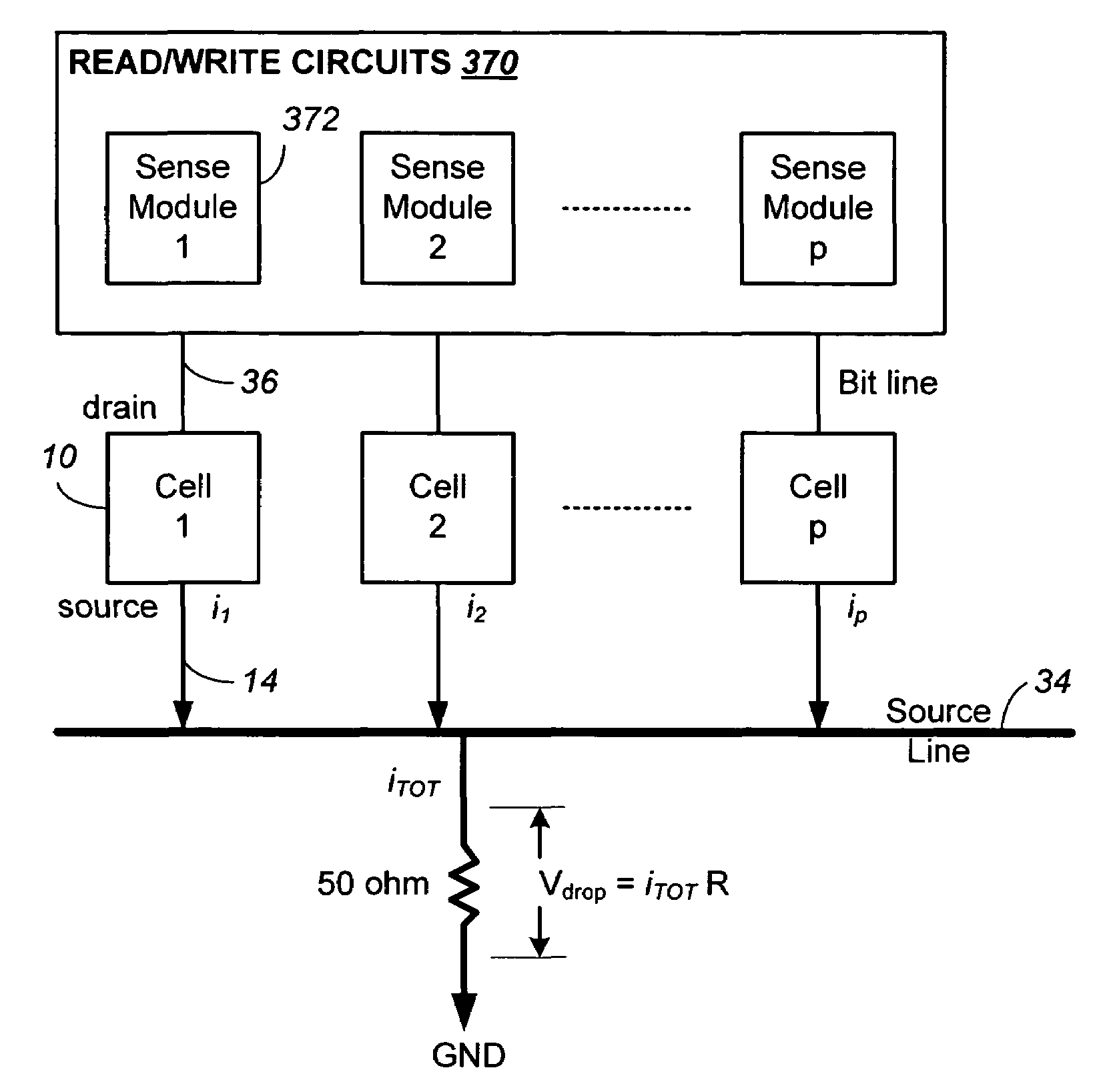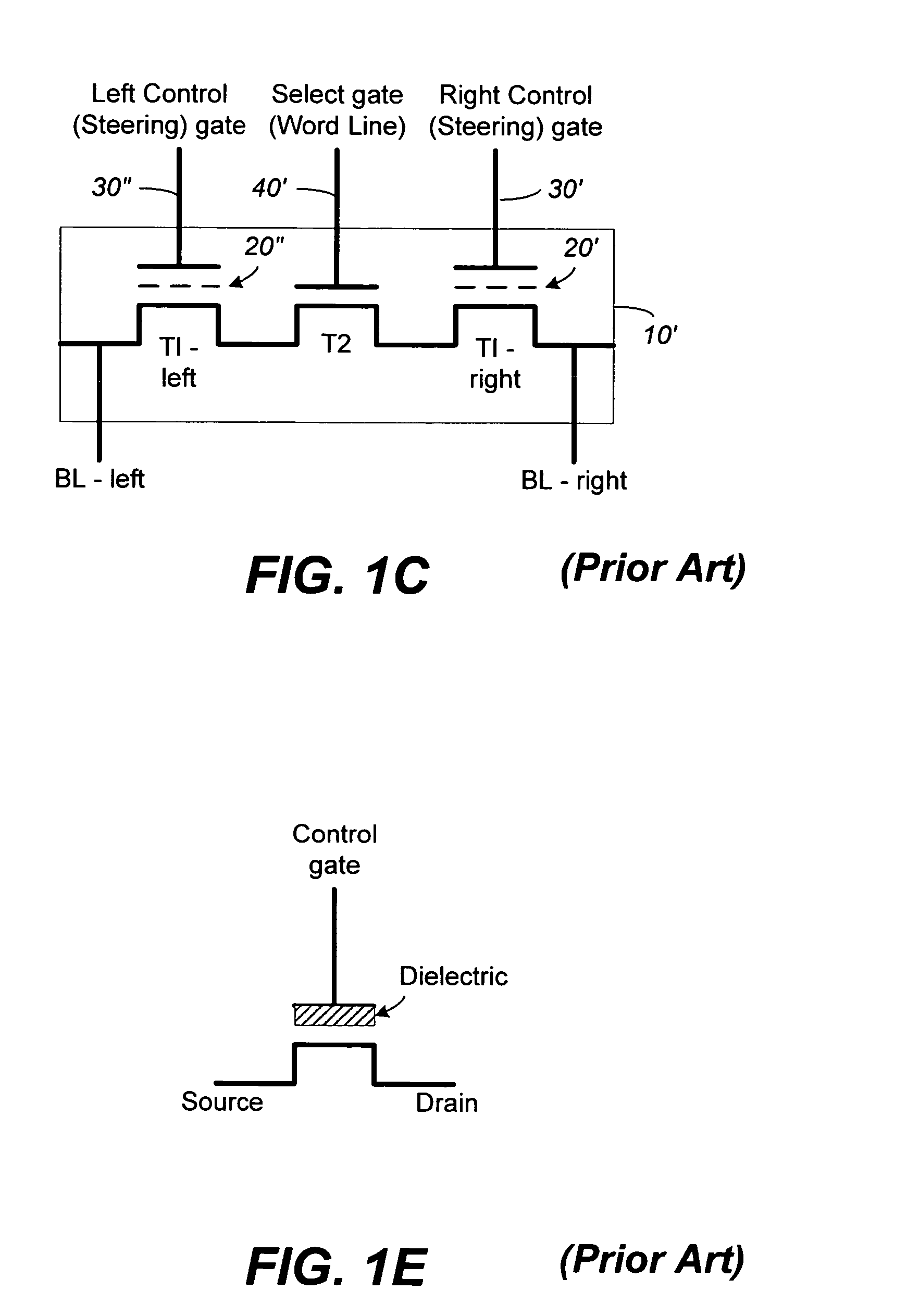Method for compensated sensing in non-volatile memory
a non-volatile memory and sensing technology, applied in static storage, digital storage, instruments, etc., to achieve the effect of high capacity, high density chip integration, and high performance non-volatile memory devices
- Summary
- Abstract
- Description
- Claims
- Application Information
AI Technical Summary
Benefits of technology
Problems solved by technology
Method used
Image
Examples
Embodiment Construction
[0102]FIG. 6A illustrates schematically a memory device having read / write circuits for reading and programming a page of memory cells in parallel, according to one embodiment of the present invention. The memory device includes a two-dimensional array of memory cells 300, control circuitry 310, and read / write circuits 370. The memory array 300 is addressable by word lines via a row decoder 330 and by bit lines via a column decoder 360. The read / write circuits 370 include multiple sense modules 380 and allow a page of memory cells to be read or programmed in parallel. In one embodiment, where a row of memory cells are partitioned into multiple pages, a page multiplexer 350 is provided to multiplex the read / write circuits 370 to the individual pages.
[0103]The control circuitry 310 cooperates with the read / write circuits 370 to perform memory operations on the memory array 300. The control circuitry 310 includes a state machine 312, an on-chip address decoder 314 and a power control mo...
PUM
 Login to View More
Login to View More Abstract
Description
Claims
Application Information
 Login to View More
Login to View More - R&D
- Intellectual Property
- Life Sciences
- Materials
- Tech Scout
- Unparalleled Data Quality
- Higher Quality Content
- 60% Fewer Hallucinations
Browse by: Latest US Patents, China's latest patents, Technical Efficacy Thesaurus, Application Domain, Technology Topic, Popular Technical Reports.
© 2025 PatSnap. All rights reserved.Legal|Privacy policy|Modern Slavery Act Transparency Statement|Sitemap|About US| Contact US: help@patsnap.com



